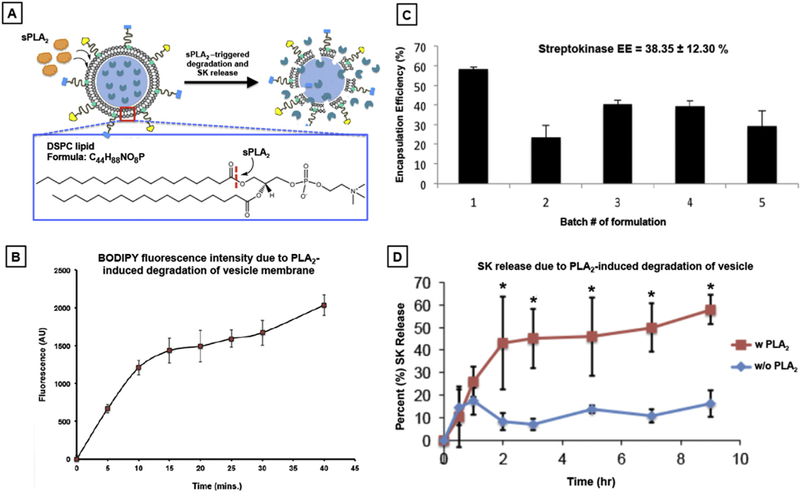Fig. 4.

[A] Schematic mechanism of sPLA2-induced membrane degradation due to cleavage of sn-2 acyl group of the phosphatidyl choline lipids; [B] Vesicle membrane degradation kinetics as monitored by measuring the increase in BODIPY fluorescence over time due to cleavage of the BODIPY moiety from the bis-BODIPY®FL C11-PC due to sPLA2 action; [C] Encapsulation efficiency (EE) assessment for streptokinase (SK) encapsulation various batches of PMINs show an average EE of ~38%; [D] Release kinetics assessment of SK from PMINs with or without sPLA2 incubation shows that upon sPLA2 exposure the percent (%) release of SK from PMINs is significantly enhanced (~4 fold) compared passive release (principally via diffusion) without sPLA2 exposure.
